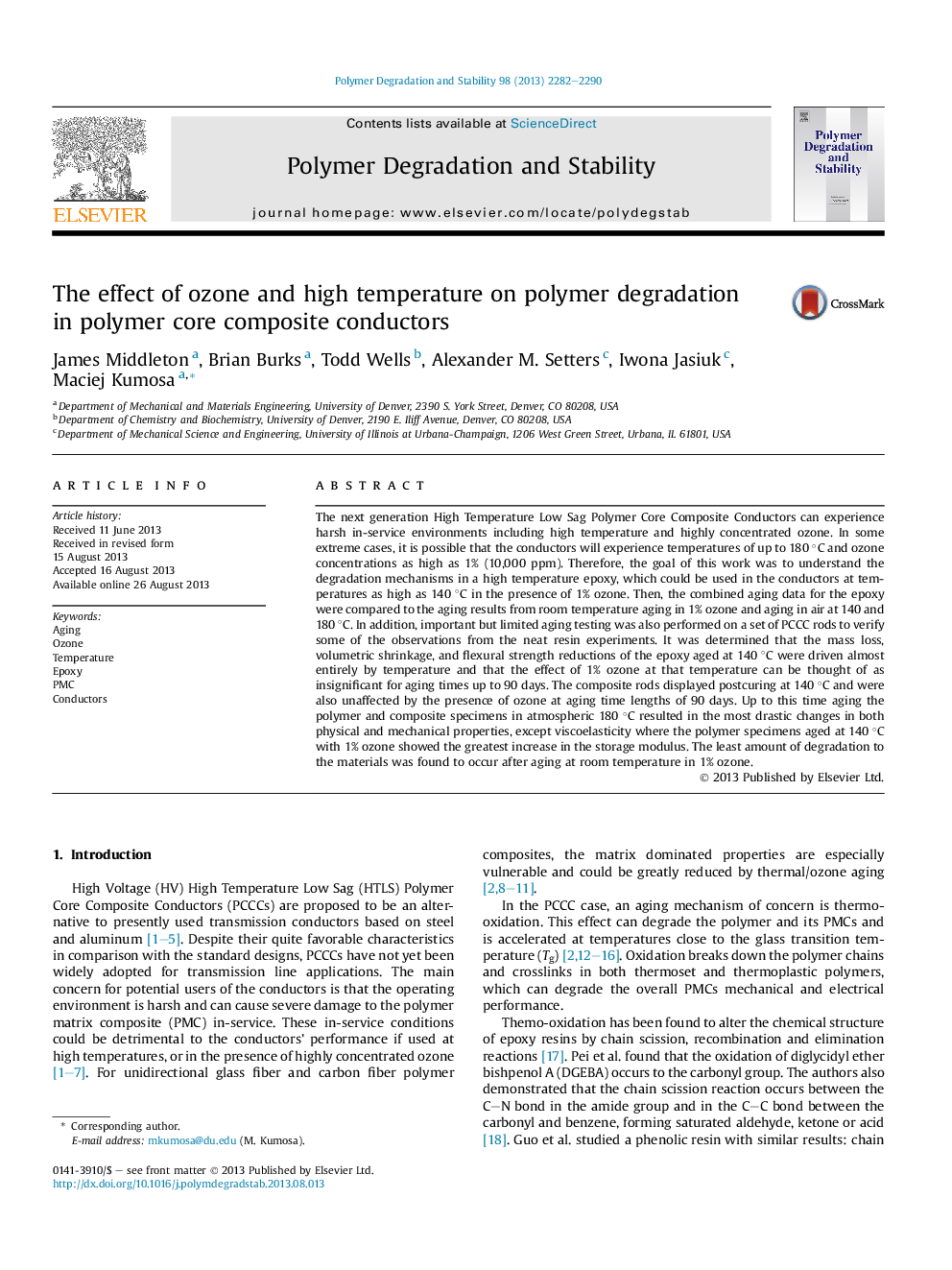| Article ID | Journal | Published Year | Pages | File Type |
|---|---|---|---|---|
| 5202268 | Polymer Degradation and Stability | 2013 | 9 Pages |
Abstract
The next generation High Temperature Low Sag Polymer Core Composite Conductors can experience harsh in-service environments including high temperature and highly concentrated ozone. In some extreme cases, it is possible that the conductors will experience temperatures of up to 180 °C and ozone concentrations as high as 1% (10,000 ppm). Therefore, the goal of this work was to understand the degradation mechanisms in a high temperature epoxy, which could be used in the conductors at temperatures as high as 140 °C in the presence of 1% ozone. Then, the combined aging data for the epoxy were compared to the aging results from room temperature aging in 1% ozone and aging in air at 140 and 180 °C. In addition, important but limited aging testing was also performed on a set of PCCC rods to verify some of the observations from the neat resin experiments. It was determined that the mass loss, volumetric shrinkage, and flexural strength reductions of the epoxy aged at 140 °C were driven almost entirely by temperature and that the effect of 1% ozone at that temperature can be thought of as insignificant for aging times up to 90 days. The composite rods displayed postcuring at 140 °C and were also unaffected by the presence of ozone at aging time lengths of 90 days. Up to this time aging the polymer and composite specimens in atmospheric 180 °C resulted in the most drastic changes in both physical and mechanical properties, except viscoelasticity where the polymer specimens aged at 140 °C with 1% ozone showed the greatest increase in the storage modulus. The least amount of degradation to the materials was found to occur after aging at room temperature in 1% ozone.
Related Topics
Physical Sciences and Engineering
Chemistry
Organic Chemistry
Authors
James Middleton, Brian Burks, Todd Wells, Alexander M. Setters, Iwona Jasiuk, Maciej Kumosa,
